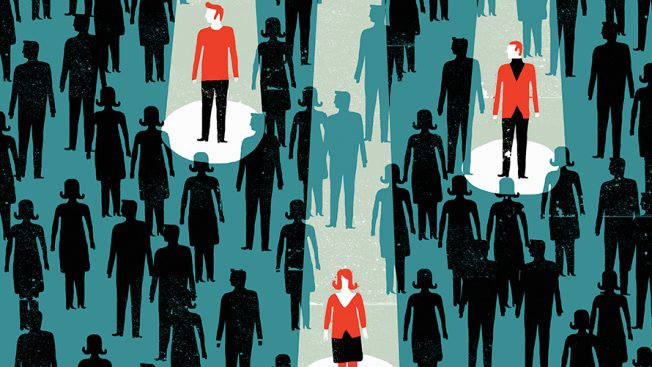Inspiration meets innovation at Brandweek, the ultimate marketing experience. Join industry luminaries, rising talent and strategic experts in Phoenix, Arizona this September 23–26 to assess challenges, develop solutions and create new pathways for growth. Register early to save.
Ever since “people-based marketing” was introduced at Advertising Week in 2014, it has become a strategic imperative for almost every brand. Fortune 500 companies are investing in and adopting the tech, agency media buyers are mandating it in insertion orders, and DSPs, DMPs and measurement providers are strategizing around how they can implement this into their offerings.
What is so revolutionary about people-based marketing is the shift toward targeted marketing—sending a message to the right individuals—rather than blindly blasting out that same message to as many people as possible. But people-based marketing is a bit of a misnomer because, in order to do it effectively, marketers need to understand more than the person. Individuals are complex, so in order to most effectively maximize the impact of people-based marketing, it is critical to understand the multiple layers—or resolutions—that make up real people.
The best way to do this is to associate devices with consumers and then categorize those consumers into a household. This hierarchical approach draws a better map of the real world, has broader applications in marketing and user experiences and is more future-proof as the basis for enterprise customer relationship management.
Why multiple resolutions?
The fact is, data has multiple resolutions, differing degrees or layers of detail and context. Therefore, our understanding of identity should be nuanced and should capture multiple resolutions, too.
For example, postal addresses, IP addresses and some CRM and loyalty data won’t be unique to individuals or their devices and should live at the household level. Likewise, smart TVs and OTT boxes are most often shared by everyone in the household. That’s not to say household data isn’t valuable—quite the opposite. Once individuals are associated with those households, the data can be applied top-down using that hierarchy.
From a bottom-up perspective, email addresses and phone numbers are user-based, and smartphones are fairly individualized as well. Every consumer in a household could be associated with a shared TV and certain CRM data while still maintaining a unique mobile device and email handle. This ushers in much deeper audience segmentation.
An understanding of multi-resolution identity enables brands to target households with more than three Apple devices, for example, or reach homes that have wireless service from multiple providers.
It also allows for multilevel extension. Given a single device ID or piece of consumer data, a marketer could do user-level extension to the entire household. In other words, an ecommerce brand with nothing but a single desktop cookie or email address could reach every consumer in the household across all devices, including TV, with relevant offers.
Connecting online and offline
While the concept of multi-resolution people-based identity may not be widely known yet in digital marketing, it’s not new to the offline world. Shopper loyalty data is a prime example for how multi-resolution identity can impact marketing. Grocery store discount cards are typically tied to a single person’s name and phone number yet used by the entire household.
However, with Safeway’s “Just 4 U” coupon app being a notable exception, grocery stores rarely have access to digital identifiers. If grocery chains adopt multi-resolution identity, they can tie their consumer-based information to other people in the household as well as to the devices owned by those family members to drive higher-performing and more measurable marketing programs.
Being able to onboard different pieces of data at the proper resolution will be critical for the future of people-based marketing. An understanding of the device-consumer-household relationship allows for expanded use of identity. That is, household targeting and extension, including frequency capping at the device-, user- and household-levels, plus deeper segmentation and increased onboarding opportunities.
People-based identity providers could allow customers to upload any identifier and associate it to a household, customer or device. Today we live and breathe in cookies and device IDs, but it’s easy to imagine email, postal address, phone number, conversions and online reach data being applied to records. Ultimately, this will be self-service as multi-resolution data onboarding becomes second nature to marketers.
In the world of people-based marketing, there are known knowns—the data marketers know they know, such as customer records—and there are also known unknowns—the data marketers know they do not know, like the other devices those customers own or people in the same household. An independent provider of people-based identity at multiple resolutions helps brands fill in the data in a manner that maps to the real world, thus solving the known unknowns. With the rise of AI and machine learning, one day potentially even the unknown unknowns will be known.








